Smart living isn’t a luxury anymore — it’s becoming a modern necessity. From intuitive thermostats to AI-enhanced security cameras, the smart home landscape in 2025 is more dynamic, intelligent, and accessible than ever. Whether you’re a tech enthusiast or just seeking comfort and security, these devices go far beyond convenience — they redefine the entire home experience.
Here’s a detailed guide to the top 10 smart home devices of 2025 that are reshaping the future of domestic life, complete with real-life use cases, estimated pricing, and practical buyer insights.
Table of Contents
- 1. Amazon Echo Hub (2025 Edition)
- 2. Google Nest Cam IQ 2
- 3. Ecobee Smart Thermostat Premium
- 4. Arlo Pro 5S 2K
- 5. Philips Hue Gradient Lightstrip
- 6. Samsung SmartThings Station
- 7. iRobot Roomba Combo j9+
- 8. Level Lock+ with Apple Home Key
- 9. Nanoleaf Skylight Panels
- 10. LG ThinQ Washer with AI DD 2.0
- Smart Home Trends in 2025
- Thoughts
- FAQ’s

1. Amazon Echo Hub (2025 Edition)
Price Range: Mid-range ($180–$250)
Best For: Users who want an all-in-one control center
Why it’s a game changer:
Amazon has turned Alexa into a true household concierge. The Echo Hub now includes a responsive 8-inch display that shows live camera feeds, climate control, lighting scenes, and more — all from a single dashboard. Built on Matter and Zigbee protocols, it’s a future-proof investment for managing your entire smart ecosystem.
Real-World Use Case: Imagine walking into your living room and seeing a quick overview of your front door camera because the motion sensor was triggered, all on one screen.
Key Features:
- Smart automation routines with AI-generated suggestions
- Custom widget dashboard
- Visual voice responses from Alexa
- Deeper compatibility across brands (Google, Apple, Samsung)

2. Google Nest Cam IQ 2
Price Range: Premium ($300–$400)
Best For: Security-conscious homeowners and renters
Why it’s powerful:
Security gets smarter with this 2025 upgrade. Featuring facial recognition, behavioral alerts, and offline backup, the Nest Cam IQ 2 elevates surveillance with AI at its core. It knows who’s at your door — and whether they’re acting suspiciously.
Real-World Use Case: Receive an alert when the camera recognizes the delivery person dropping off a package, even before they ring the doorbell.
Key Features:
- Local + cloud encrypted storage
- Automatic animal, person, and vehicle detection
- 4K UHD with HDR and night vision
- Integration with Google Assistant & Nest Aware Plus

3. Ecobee Smart Thermostat Premium
Price Range: Mid-range ($220–$280)
Best For: Eco-conscious users looking for energy savings
Why it’s smart living at its best:
This isn’t just a thermostat — it’s a climate concierge. With built-in radar sensors, voice assistants, air quality monitors, and occupancy detection, it controls your indoor environment with surgical precision.
Real-World Use Case: The thermostat learns that you prefer a cooler temperature at night and automatically adjusts, while also alerting you to a spike in indoor air pollutants.
Key Features:
- Radar-based motion detection
- Built-in Alexa, Siri, and Google Assistant
- Air quality alerts + smart humidifier control
- Energy-saving insights with dynamic suggestions
Eco-Highlight: Saves up to 26% annually on heating/cooling bills.

4. Arlo Pro 5S 2K
Price Range: Premium ($250–$350)
Best For: Homeowners needing wireless, 24/7 security
Why it’s a fortress in disguise:
Designed for those serious about home security, the Arlo Pro 5S supports dual-band Wi-Fi, 2K HDR video, and 24/7 recording even during outages — thanks to its SmartHub backup.
Key Features:
- Color night vision
- Smart alerts for packages, faces, animals
- Long battery life with solar panel add-on
- End-to-end encryption and privacy controls
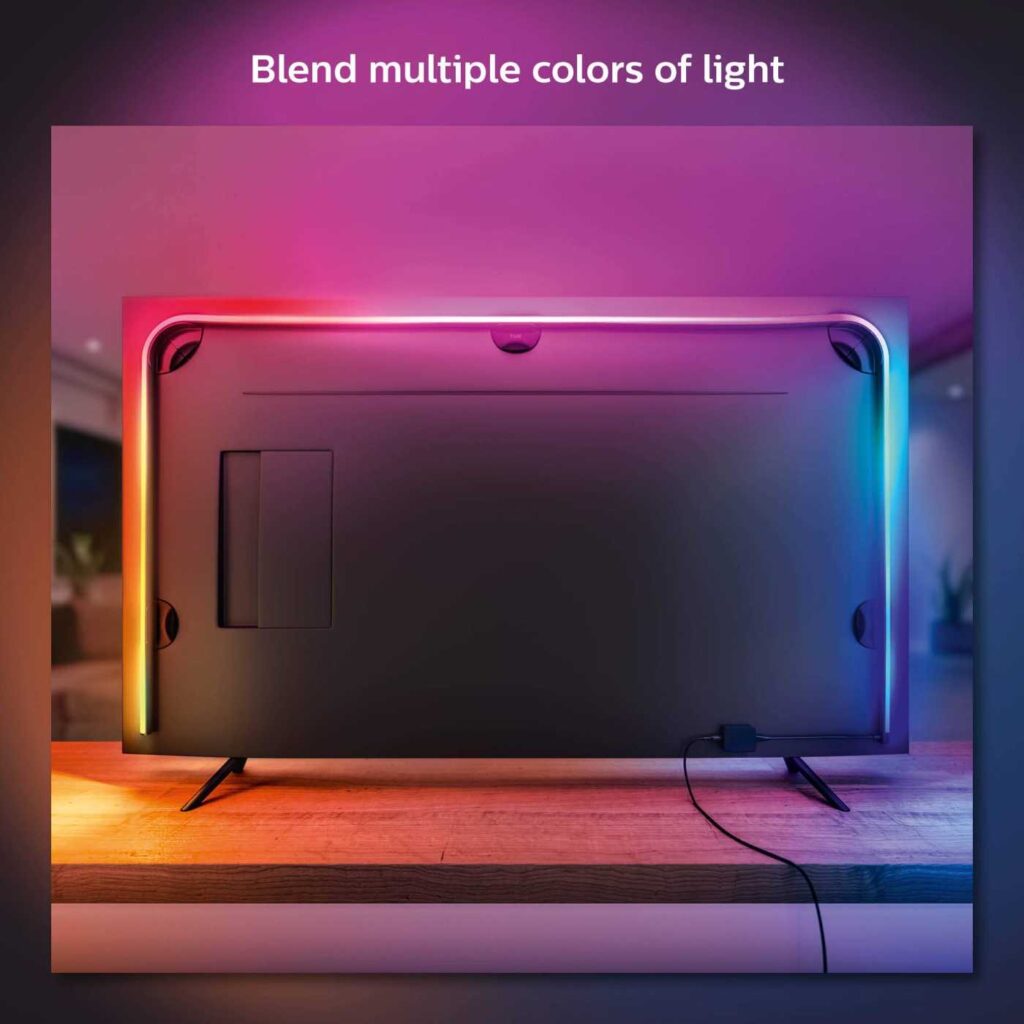
5. Philips Hue Gradient Lightstrip
Price Range: Mid-range ($120–$180)
Best For: Content creators, gamers, and home-theater lovers
Why it transforms home life:
Philips Hue remains the gold standard in mood lighting, and the 2025 Gradient strip brings a TV-synced, room-filling ambiance with multiple color zones.
Real-World Use Case: Sync your lights to your favorite movie or game for a fully immersive experience.
Key Features:
- Reactive lighting for movies, games, and music
- Control with app, voice, or dynamic scenes
- Compatible with Matter, HomeKit, Alexa
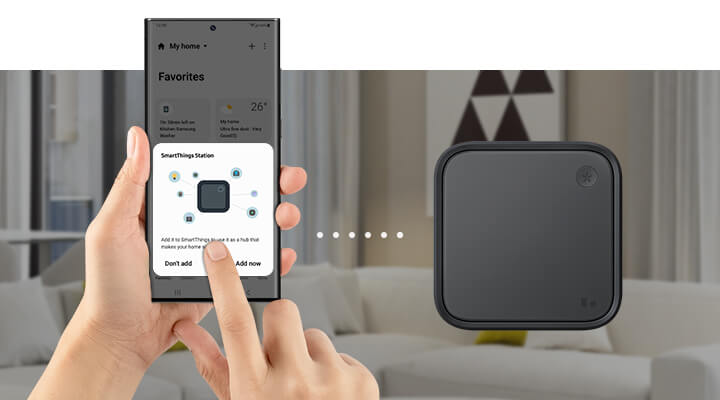
6. Samsung SmartThings Station
Price Range: Budget-friendly ($60–$90)
Best For: Beginners building their first smart setup
Why it’s the new command center:
Samsung’s updated SmartThings hub is the heartbeat of Matter-based smart homes. It now includes wireless charging and integrates easily with Google, Apple, and Samsung ecosystems.
Real-World Use Case: Place your phone on it to charge while triggering your evening home routine — dimming lights, locking doors, and turning on music.
Key Features:
- One-touch automation
- Fast wireless phone charging
- AI-powered routines
- Easily pairs with 1,000+ devices
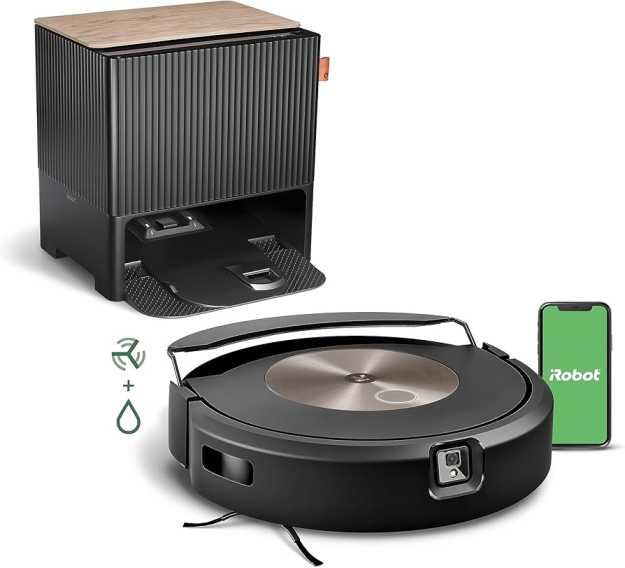
7. iRobot Roomba Combo j9+
Price Range: Premium ($900–$1,000)
Best For: Busy households and pet owners
Why it’s genius:
It doesn’t just vacuum — it lifts the mop when it detects carpet, automatically empties itself, and cleans with a precision that feels human.
Real-World Use Case: Schedule cleanings while you’re away at work and come home to spotless floors without lifting a finger.
Key Features:
- Smart obstacle avoidance
- Self-washing mop pad
- Voice assistant integration
- Custom cleaning schedules based on your habits

8. Level Lock+ with Apple Home Key
Price Range: Mid-range ($250–$300)
Best For: Apple ecosystem users prioritizing security
Why it’s sleek and secure:
Level Lock+ is almost invisible — yet it provides the smartest access control. With Apple Home Key, you just tap your iPhone or Apple Watch to unlock.
Real-World Use Case: Arrive home with your hands full of groceries and unlock the door with just your Apple Watch.
Key Features:
- Auto-lock/unlock
- Secure, encrypted authentication
- Key sharing with family and friends
- Works with Apple, Alexa, and Google

9. Nanoleaf Skylight Panels
Price Range: Mid-range ($250–$350)
Best For: Design-forward homes, studios, and creative spaces
Why it’s a ceiling revolution:
Nanoleaf Skylights replace boring fixtures with modular, color-changing, touch-sensitive panels that bring sky-like ambience to your home.
Real-World Use Case: Wake up to a soft sunrise simulation or set dynamic hues for your next dinner party.
Key Features:
- Adjustable color temperature + circadian rhythm sync
- Works with Matter, Thread
- Syncs with media and voice commands
- Customizable layouts
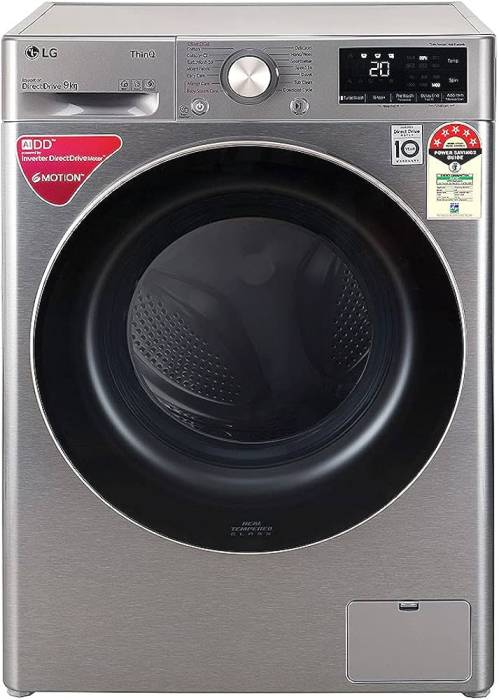
10. LG ThinQ Washer with AI DD 2.0
Price Range: Premium ($1,000–$1,400)
Best For: Smart homeowners optimizing chores
Why it’s next-level automation:
This washer detects fabric type, dirt level, and load size to create the optimal wash cycle. It also communicates with your other LG appliances for whole-home AI sync.
Real-World Use Case: Toss in a mixed load and let the machine decide the wash mode — no guesswork needed.
Key Features:
- Built-in sensors for AI wash cycles
- Works with LG ThinQ App
- Low water usage & energy efficient
- Voice-controlled with Alexa & Google Assistant
Smart Home Trends in 2025
Matter Adoption: The Game-Changer for Interoperability
Matter is an open-source, universal standard that ensures your devices talk to each other — regardless of brand. It’s making it easier than ever to build a seamless smart home setup.
Smart Device Considerations: What to Watch Out For
- Privacy Risks: Always choose brands with strong encryption and local storage options.
- Internet Dependency: A reliable connection is key — some devices lose functionality offline.
- Learning Curve: New users may find setup and customization initially overwhelming.
Thoughts
These 2025 smart home devices offer the perfect blend of functionality, style, and future-readiness. From automated climate control to AI-enhanced security, each product adds value to your daily life.
Visit hottopicjunction.com to browse detailed reviews, how-to guides, and smart home starter packs.
FAQ’s
How big is the smart home market in 2025?
The global smart home market in 2025 is projected to surpass $170 billion, driven by widespread adoption of AI-powered devices, Matter-supported ecosystems, and growing consumer demand for convenience, security, and energy efficiency. North America, Europe, and Asia-Pacific are leading the charge with double-digit growth rates.
What are the future trends for smart homes?
Key smart home trends shaping the future include:
Privacy-First Design: On-device processing and encrypted local storage
Matter Protocol Adoption: Ensures seamless device interoperability
AI & Machine Learning: Personalized automation and predictive routines
Voice & Gesture Control: Expanding beyond touch interfaces
Sustainable Smart Devices: Energy-efficient, low-waste, and solar-integrated tech
What are the top-rated smart home devices?
As of 2025, some of the highest-rated smart home devices include:
Level Lock+ – Most secure and seamless smart lock
These are praised for reliability, smart features, and Matter compatibility.
Amazon Echo Hub – Best for centralized control
Google Nest Cam IQ 2 – Leading in smart security
Ecobee Smart Thermostat Premium – Best for energy efficiency
iRobot Roomba Combo j9+ – Top-rated cleaning robot
What is the future of smart homes?
The future smart home will be a fully adaptive environment — learning your habits, responding proactively to your needs, and operating with minimal user input. Expect deeper AI integration, fully interoperable devices, and homes that prioritize sustainability, wellness, and privacy. It’s no longer just “smart”— it’s intuitive, secure, and emotionally intelligent.

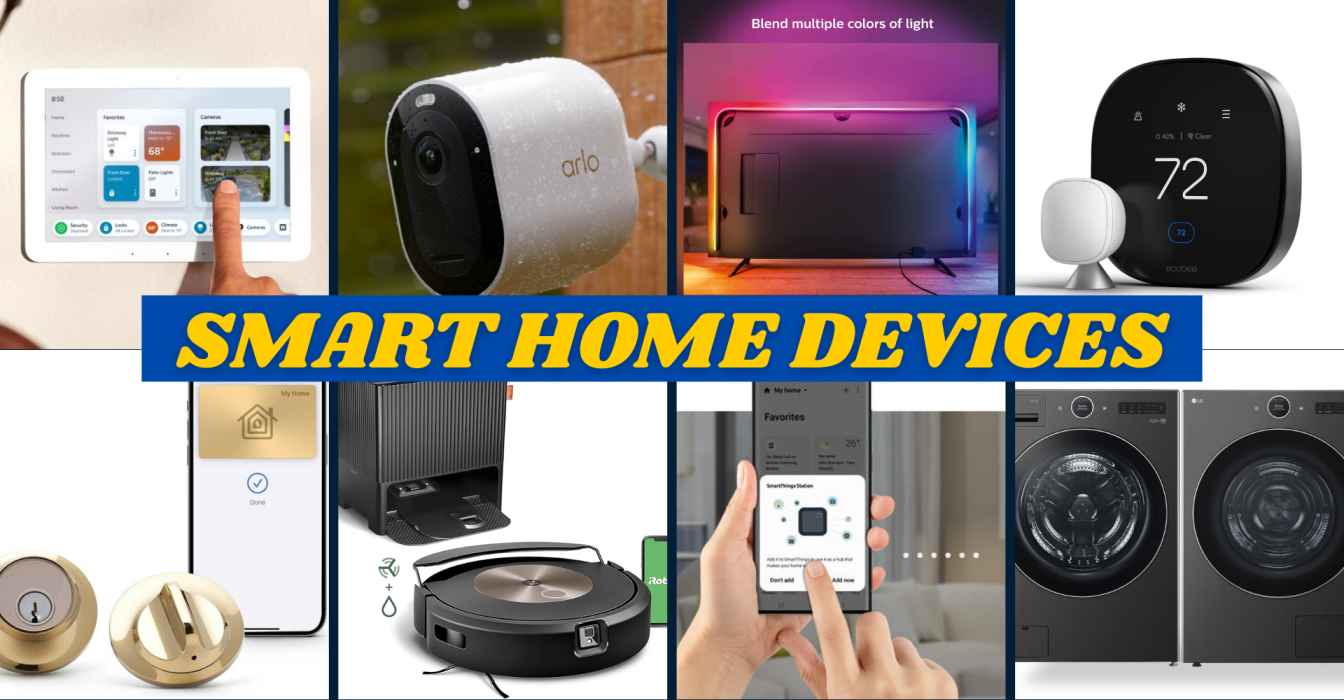
The website design looks great—clean, user-friendly, and visually appealing! It definitely has the potential to attract more visitors. Maybe adding even more engaging content (like interactive posts, videos, or expert insights) could take it to the next level. Keep up the good work!
Thanks Keep supporting.
The website design looks great—clean, user-friendly, and visually appealing! It definitely has the potential to attract more visitors. Maybe adding even more engaging content (like interactive posts, videos, or expert insights) could take it to the next level. Keep up the good work!
Thanks Keep supporting.
На данном сайте вы найдете сервис “Глаз Бога”, что собрать данные о человеке из открытых источников.
Сервис работает по номеру телефона, анализируя публичные материалы в сети. Благодаря ему можно получить пять пробивов и полный отчет по имени.
Платфор ма обновлен на 2025 год и включает мультимедийные данные. Глаз Бога гарантирует найти профили в открытых базах и отобразит результаты в режиме реального времени.
глаз бога бесплатно на телефон
Это бот — помощник при поиске людей удаленно.
Back then, I believed healthcare worked like clockwork. The pharmacy hands it over — you don’t question the process. It felt safe. But that illusion broke slowly.
Then the strange fog. I blamed my job. But my body was whispering something else. I searched forums. The warnings were there — just buried in jargon.
what is in kamagra
That’s when I understood: health isn’t passive. The reaction isn’t always immediate, but it’s real. Side effects hide. Still we trust too easily.
Now I question more. But because no one knows my body better than I do. I challenge assumptions. But I don’t care. This is self-respect, not defiance. The turning point, it would be keyword.
Этот сайт публикует интересные новости со всего мира.
Здесь доступны новости о политике, науке и разных направлениях.
Контент пополняется ежедневно, что позволяет всегда быть в курсе.
Понятная навигация ускоряет поиск.
https://ulmoda.ru
Любой материал проходят проверку.
Редакция придерживается достоверности.
Оставайтесь с нами, чтобы быть в центре внимания.
Нужно собрать информацию о пользователе? Этот бот поможет полный профиль мгновенно.
Воспользуйтесь уникальные алгоритмы для анализа цифровых следов в открытых источниках.
Узнайте место работы или активность через систему мониторинга с гарантией точности .
глаз бога поиск людей
Система функционирует с соблюдением GDPR, используя только общедоступную информацию.
Закажите детализированную выжимку с геолокационными метками и списком связей.
Попробуйте проверенному решению для digital-расследований — точность гарантирована!
Модель Submariner от представленная в 1953 году стала первыми водонепроницаемыми часами , выдерживающими глубину до 100 метров .
Часы оснащены 60-минутную шкалу, Oyster-корпус , обеспечивающие безопасность даже в экстремальных условиях.
Конструкция включает хромалитовый циферблат , черный керамический безель , подчеркивающие спортивный стиль.
rolex-submariner-shop.ru
Автоподзавод до 3 суток сочетается с автоматическим калибром , что делает их идеальным выбором для активного образа жизни.
За десятилетия Submariner стал символом часового искусства, оцениваемым как коллекционеры .